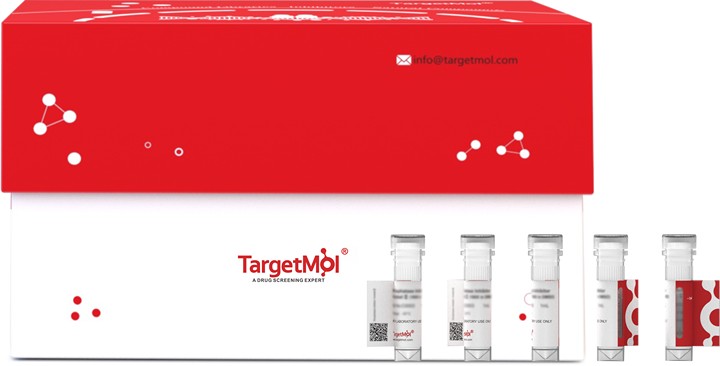 Your shopping cart is currently empty
Your shopping cart is currently empty
GSTZ1 Protein, Human, Recombinant (His)
GSTZ1 (Glutathione S-Transferase Zeta 1) is a Protein Coding gene. 3 alternatively spliced human isoforms have been reported. GSTZ1 gene is a member of the glutathione S-transferase (GSTs) super-family which encodes multifunctional enzymes important in the detoxification of electrophilic molecules, including carcinogens, mutagens, and several therapeutic drugs, by conjugation with glutathione. GSTZ1 is a bifunctional protein that has minimal glutathione-conjugating activity with ethacrynic acid and 7-chloro-4-nitrobenzo-2-oxa-1,3-diazole and maleylacetoacetate isomerase activity. GSTZ1 catalyzes the glutathione-dependent oxygenation of dichloroacetic acid to glyoxylic acid. GSTZ1 participates in the catabolism of phenylalanine and tyrosine. Thus defects in GSTZ1 cause harsh metabolic disorders including alkaptonuria, phenylketonuria, and tyrosinemia.

GSTZ1 Protein, Human, Recombinant (His)
| Pack Size | Price | USA Warehouse | Global Warehouse | Quantity |
|---|---|---|---|---|
| 5 μg | $68 | 7-10 days | 7-10 days | |
| 10 μg | $108 | 7-10 days | 7-10 days | |
| 20 μg | $178 | 7-10 days | 7-10 days | |
| 50 μg | $359 | 7-10 days | 7-10 days | |
| 100 μg | $696 | 7-10 days | 7-10 days |
Product Information
| Biological Activity | Activity testing is in progress. It is theoretically active, but we cannot guarantee it. If you require protein activity, we recommend choosing the eukaryotic expression version first. |
| Description | GSTZ1 (Glutathione S-Transferase Zeta 1) is a Protein Coding gene. 3 alternatively spliced human isoforms have been reported. GSTZ1 gene is a member of the glutathione S-transferase (GSTs) super-family which encodes multifunctional enzymes important in the detoxification of electrophilic molecules, including carcinogens, mutagens, and several therapeutic drugs, by conjugation with glutathione. GSTZ1 is a bifunctional protein that has minimal glutathione-conjugating activity with ethacrynic acid and 7-chloro-4-nitrobenzo-2-oxa-1,3-diazole and maleylacetoacetate isomerase activity. GSTZ1 catalyzes the glutathione-dependent oxygenation of dichloroacetic acid to glyoxylic acid. GSTZ1 participates in the catabolism of phenylalanine and tyrosine. Thus defects in GSTZ1 cause harsh metabolic disorders including alkaptonuria, phenylketonuria, and tyrosinemia. |
| Species | Human |
| Expression System | E. coli |
| Tag | N-His |
| Accession Number | O43708 |
| Synonyms | MAI,MAAI,GSTZ1-1,GSTZ1,glutathione S-transferase ζ 1,glutathione S-transferase zeta 1 |
| Construction | A DNA sequence encoding the mature form of human GSTZ1 (NP_665877.1) (Met1-Ala216) was expressed with a polyhistide tag at the N-terminus. Predicted N terminal: His |
| Protein Purity | > 95 % as determined by SDS-PAGE |
| Molecular Weight | 26 kDa (predicted); 27 kDa (reducing conditions) |
| Endotoxin | Please contact us for more information. |
| Formulation | Lyophilized from a solution filtered through a 0.22 μm filter, containing PBS, 10% glycerol, pH 7.4. Typically, a mixture containing 5% to 8% trehalose, mannitol, and 0.01% Tween 80 is incorporated as a protective agent before lyophilization. |
| Reconstitution | A Certificate of Analysis (CoA) containing reconstitution instructions is included with the products. Please refer to the CoA for detailed information. |
| Stability & Storage | It is recommended to store recombinant proteins at -20°C to -80°C for future use. Lyophilized powders can be stably stored for over 12 months, while liquid products can be stored for 6-12 months at -80°C. For reconstituted protein solutions, the solution can be stored at -20°C to -80°C for at least 3 months. Please avoid multiple freeze-thaw cycles and store products in aliquots. |
| Shipping | In general, Lyophilized powders are shipping with blue ice. |
| Research Background | GSTZ1 (Glutathione S-Transferase Zeta 1) is a Protein Coding gene. 3 alternatively spliced human isoforms have been reported. GSTZ1 gene is a member of the glutathione S-transferase (GSTs) super-family which encodes multifunctional enzymes important in the detoxification of electrophilic molecules, including carcinogens, mutagens, and several therapeutic drugs, by conjugation with glutathione. GSTZ1 is a bifunctional protein that has minimal glutathione-conjugating activity with ethacrynic acid and 7-chloro-4-nitrobenzo-2-oxa-1,3-diazole and maleylacetoacetate isomerase activity. GSTZ1 catalyzes the glutathione-dependent oxygenation of dichloroacetic acid to glyoxylic acid. GSTZ1 participates in the catabolism of phenylalanine and tyrosine. Thus defects in GSTZ1 cause harsh metabolic disorders including alkaptonuria, phenylketonuria, and tyrosinemia. |
Dose Conversion
Calculator
Tech Support
| Size | Quantity | Unit Price | Amount | Operation |
|---|

Copyright © 2015-2025 TargetMol Chemicals Inc. All Rights Reserved.



